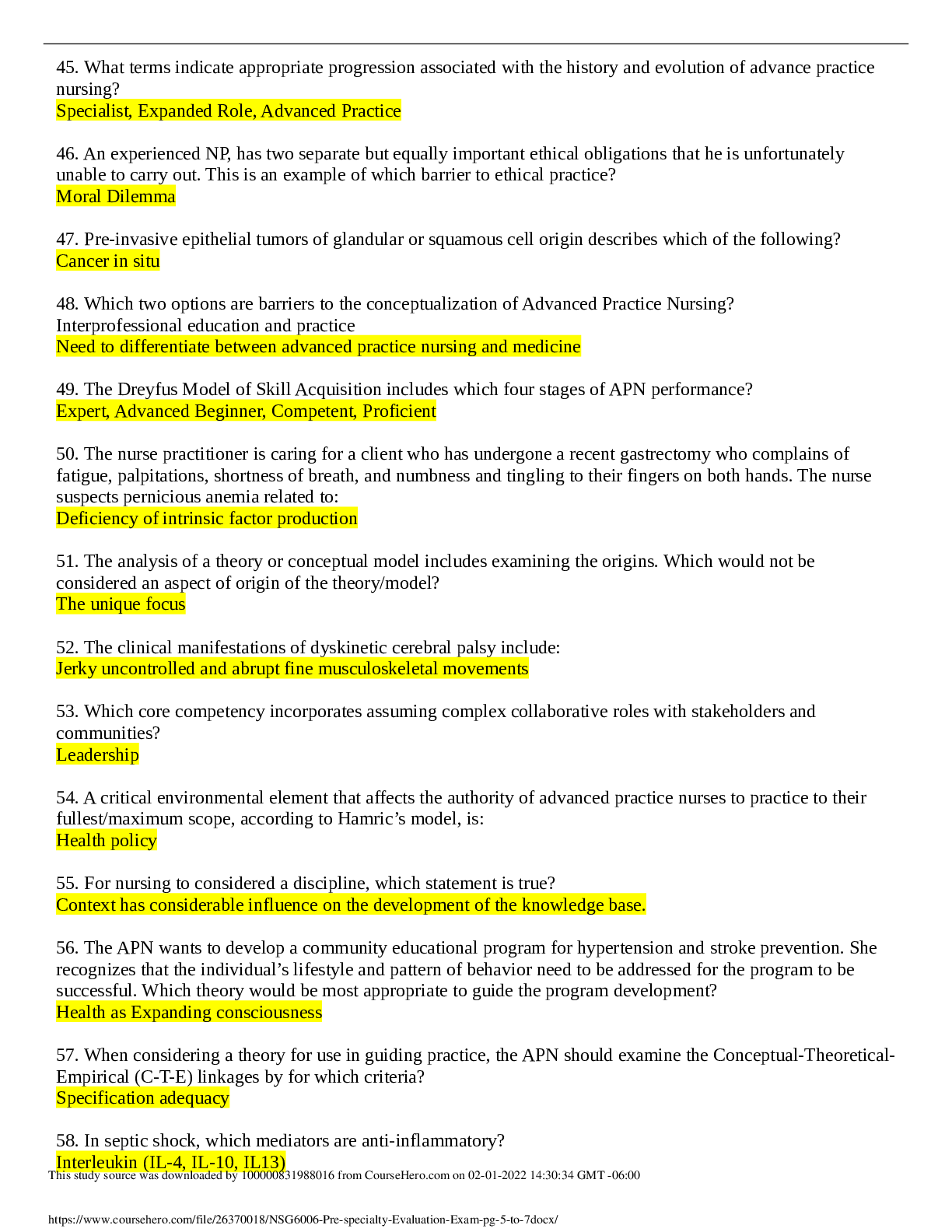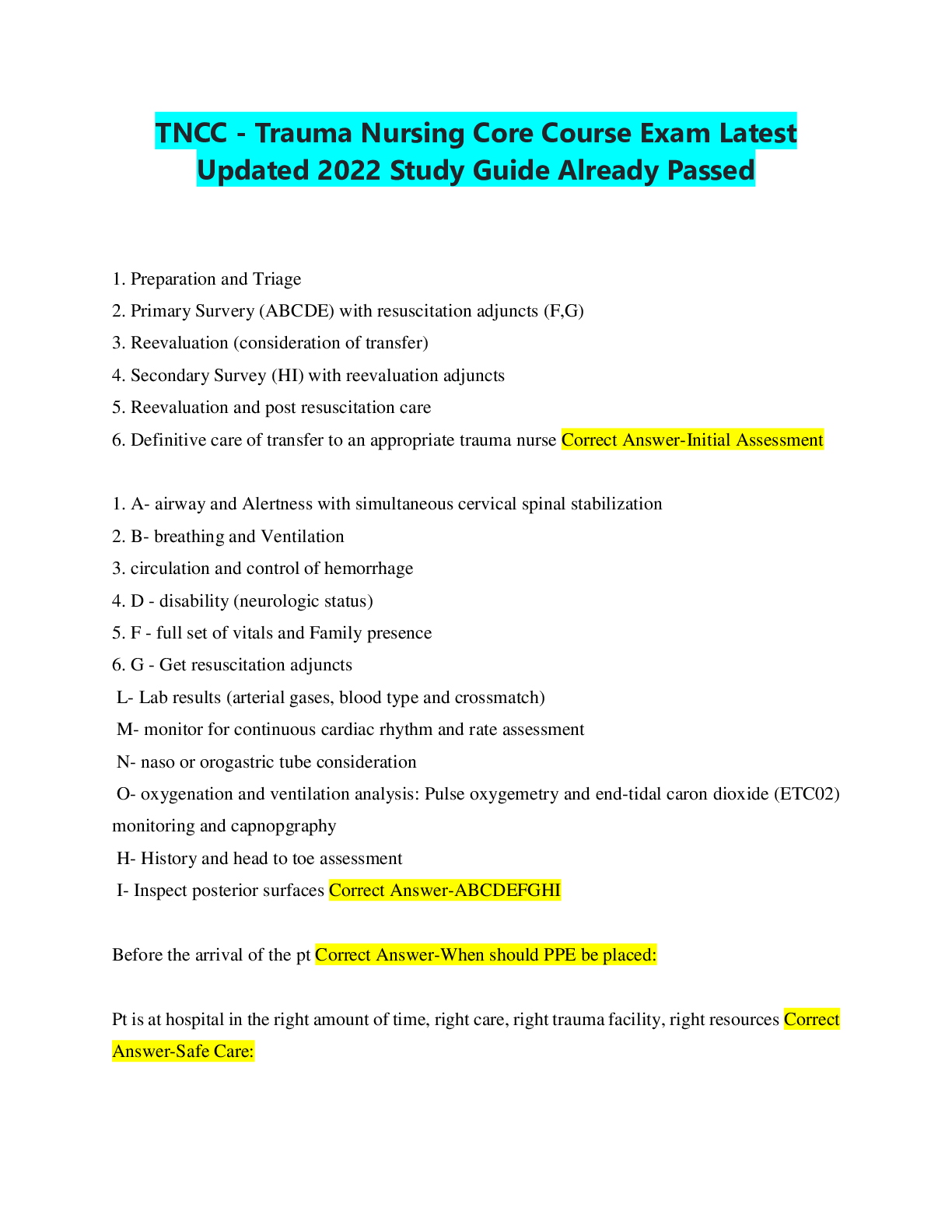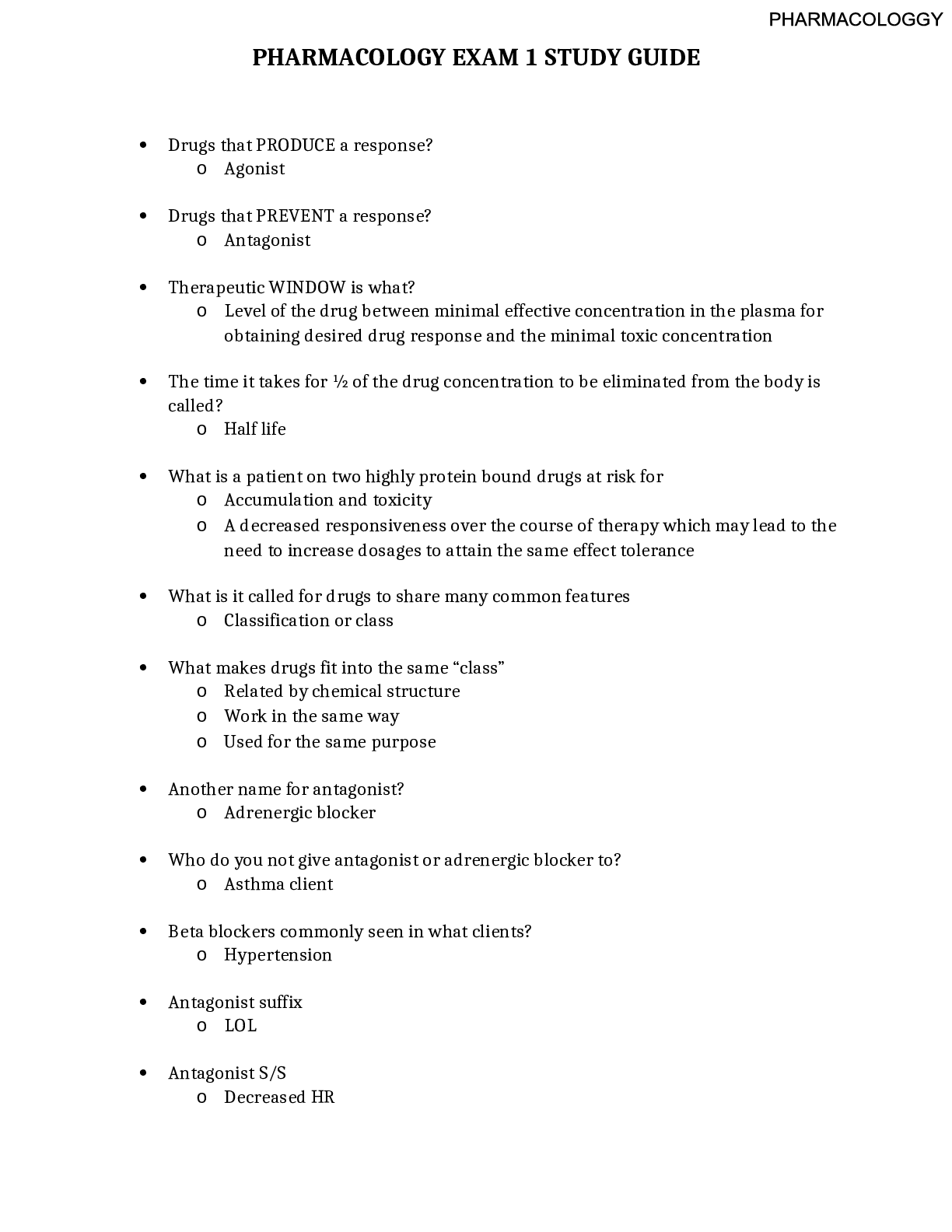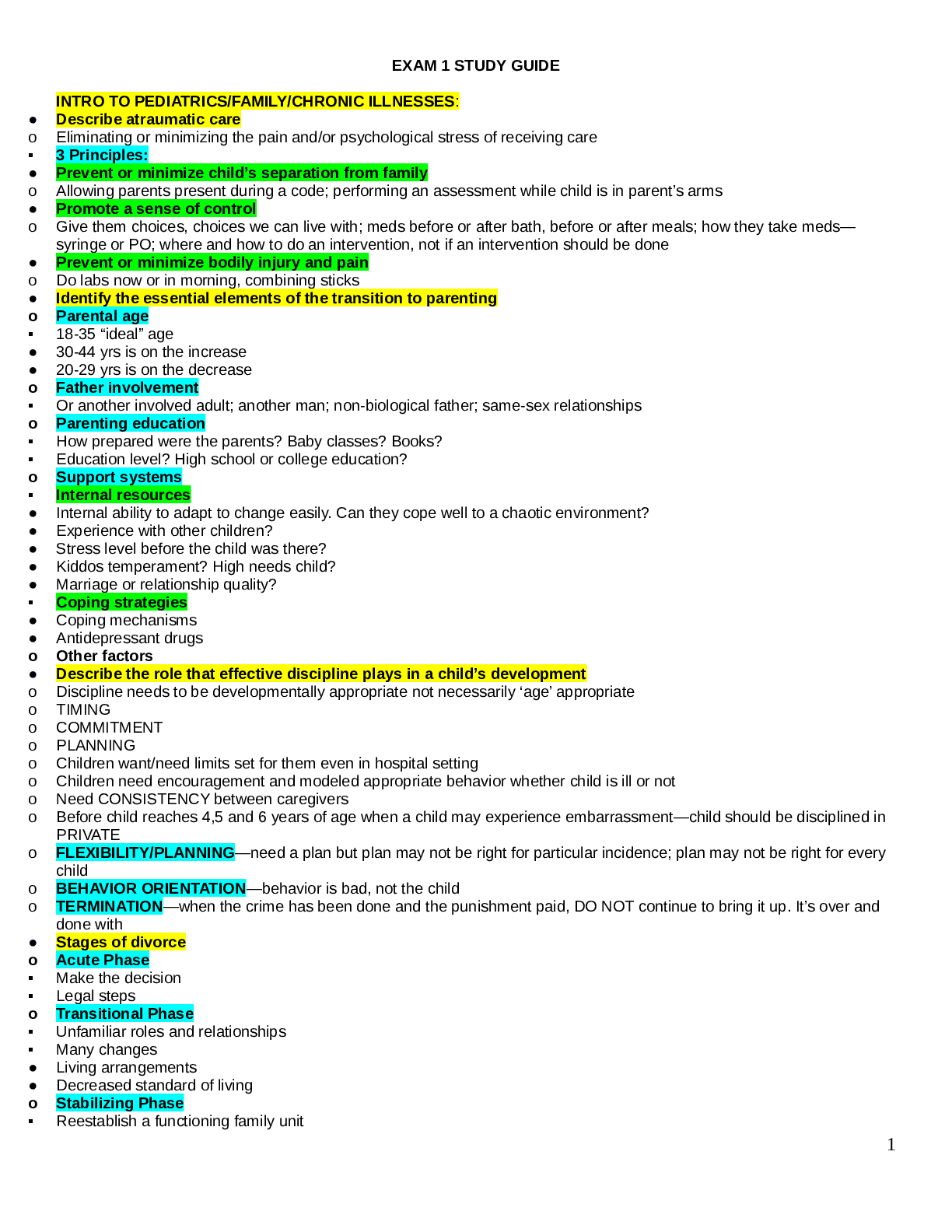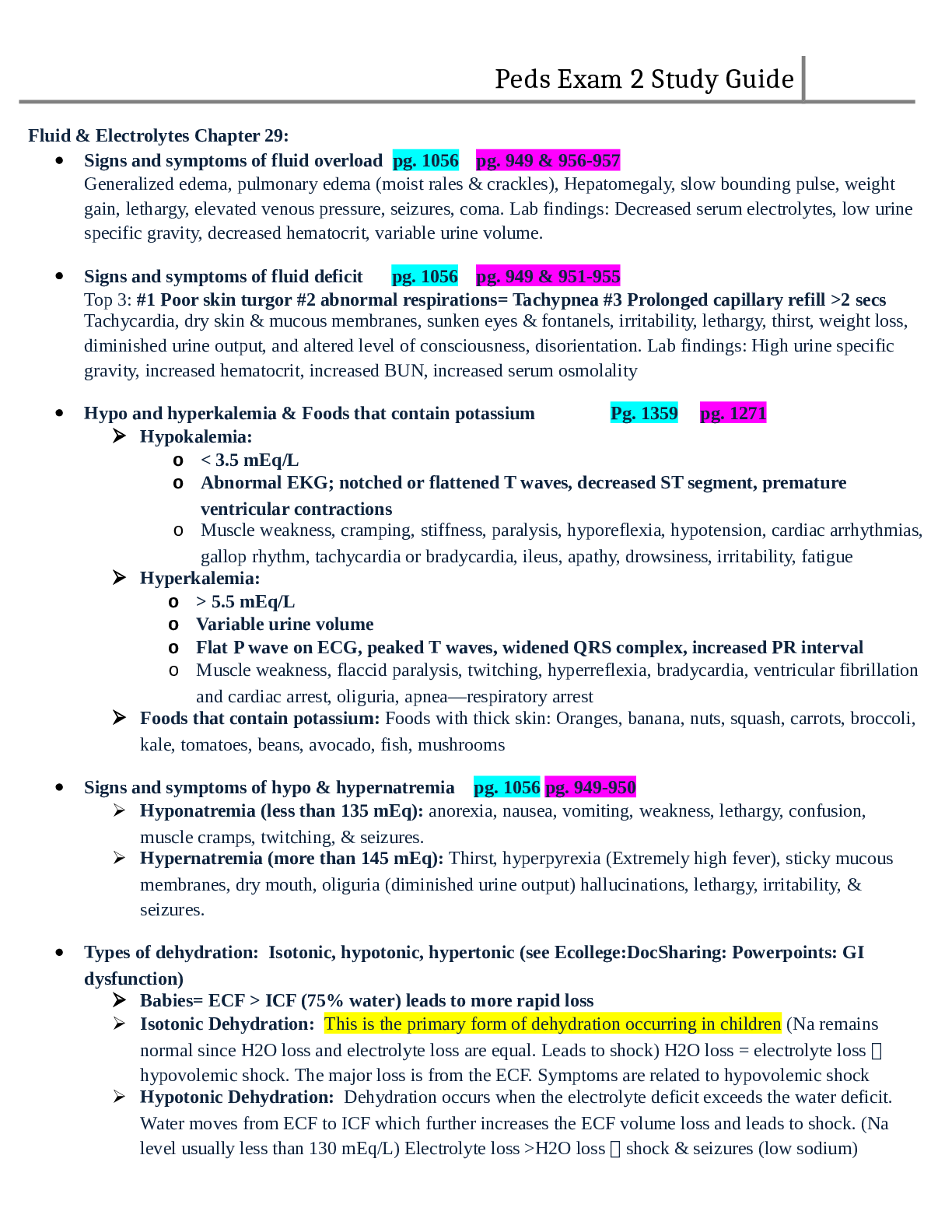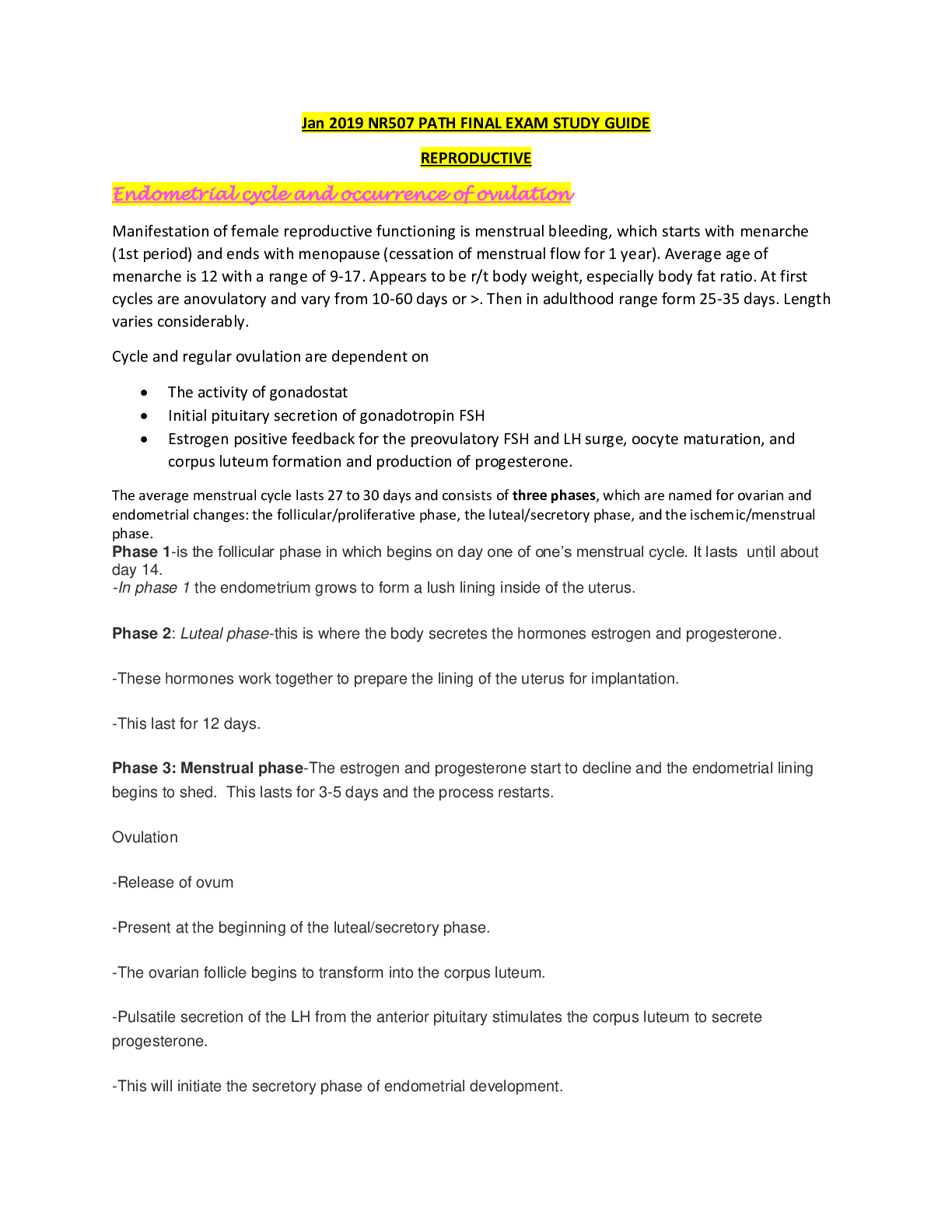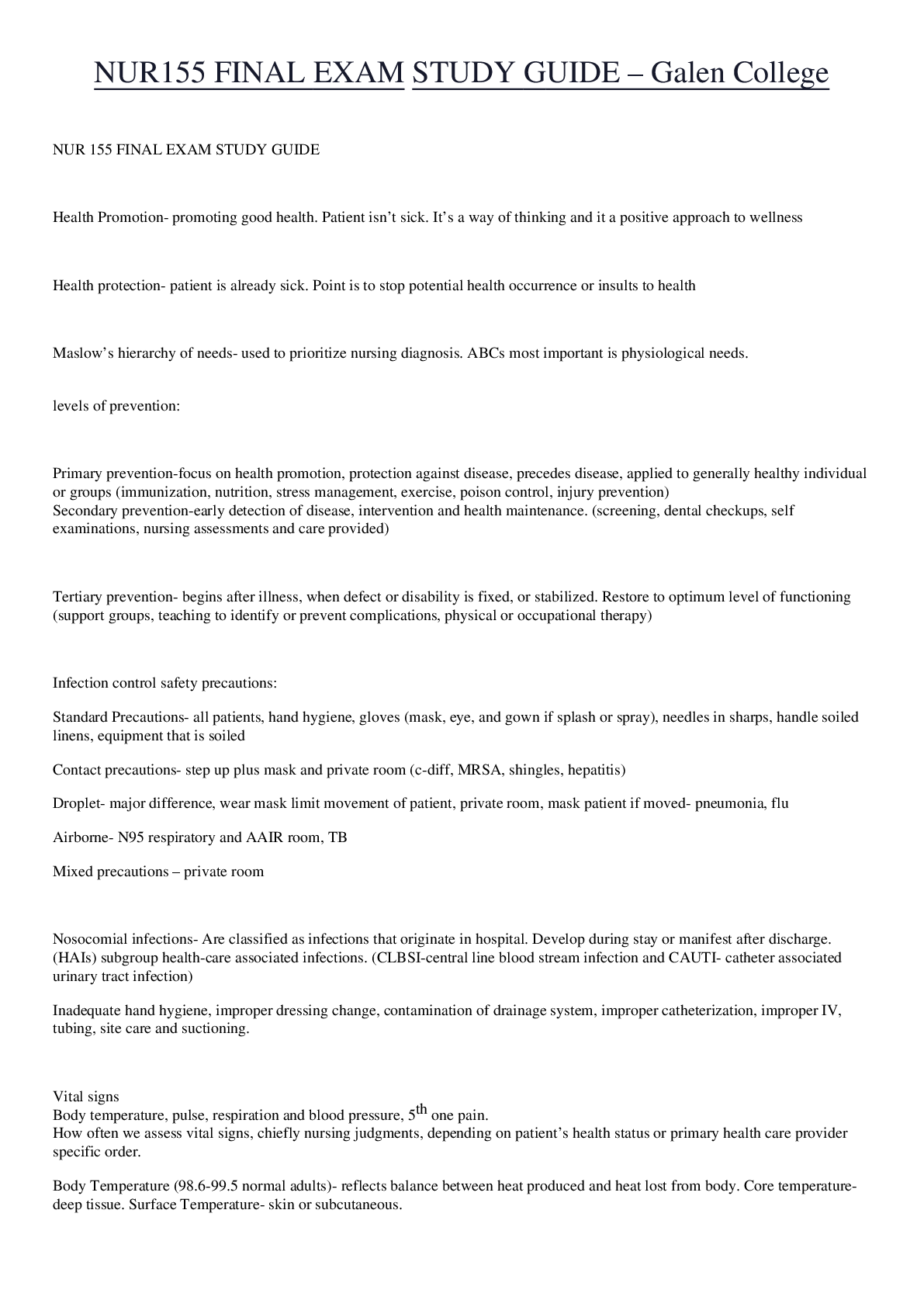*NURSING > STUDY GUIDE > NSG 6435 FINAL EXAM STUDY GUIDE 3 - ALREADY PASSED (All)
NSG 6435 FINAL EXAM STUDY GUIDE 3 - ALREADY PASSED
Document Content and Description Below
1. A congenital heart abnormality often discovered during the newborn period is coarctation of the aorta. How is this assessed? By comparing right and left femoral pulses By comparing right and le... ft pedal pulses By comparing upper and lower extremity blood pressures By auscultating an audible bruit in the carotid arteries 2. A child who can stack a maximum of 5 blocks is probably: 1 yr of age 15 months of age 2 years of age 3 years of age 3. A 6 yr old child who has moderate persistent asthma is diagnosed with pneumonia after chest x-ray and lab studies. He developed a sudden onset of fever with chills. He is in no distress. What is the preferred treatment for him? Supportive measures, it is probably viral Amoxicillin Azithromycin Doxycycline 4. A healthy appearing 3-yr old female presents with non-blanchable redness over both knees and elbows. During the exam, she is found to have normal growth and development, and she interacts appropriately with the NP. She had an upper respiratory infection about 4 wks ago that cleared without incident. A CBC and UA were obtained. The most likely diagnosis is: Septic arthritis Acute lymphocytic leukemia (ALL) von Willebrands disease idiopathic thrombocytopenia purpura (ITP) 5. An adolescent has acne. The NP prescribed a benzoyl peroxide product for him. What important teaching point should be given to this adolescent regarding the benzoyl peroxide? Don't apply this product more than once a day This often causes peeling of the skin Photosensitivity of the skin can occur Hypersensitivity can occur with repeat use 6. a 6-wk old male infant is brought to the NP because of vomiting. The mother describes vomiting after feeding and feeling a knot in his abdomen especially after he vomits. The child appears adequately nourished. What is the likely etiology? GERD Pyloric stenosis Constipation Munchausen syndrome by proxy 7. Which suggestion below is the standard for treating iron deficiency anemia in infants and children? Iron supplements in divided doses between meals with orange juice Iron supplements once daily with the largest meal Meat >5 servings per week with citrus juice Iron supplement with orange juice 5 times per week 8. A young child has developed a circumferential lesion on her inner forearm. It is slightly raised, red and is puritic. It is about 2.5 cm in diameter. This is probably related to: Impetigo the child's new cat juvenile rheumatoid arthritis A psoriatic lesion 9. A 7-yr old entered clinic 1 month ago. There was no evidence that he had any immunizations. He was given the vaccinations listed on his vaccination record at the time of his visit. if he returns today, which immunizations can he receive? Hep B, Td, Hib, polio, MMR Hep B, Td, IPV, MMR, varicella IPV only Hep B, DTaP, IPV, MMR 10. What would be appropriate anticipatory guidance for the parent of a 9-month old infant? Discuss weaning from bottle Keep syrup of ipecac in case of accidental poisoning Your baby should be able to say 10 words before age 1 year Stranger anxiety will develop by 1 year of age. 11. An infant is diagnosed with diaper dermatitis. Satelite lesions are visible. This should be treated with a: Moisture barrier like zinc oxide. Topical anti-fungal agent. Topical anti-bacterial agent. Low potency steroid cream 12. The NP sees a child who reports fatigue and presents with purpura on his lower extremities. His temperature is normal. The differential includes: Anemia Abuse Acute Leukemia Kawasaki syndrome 13. Genetics Nutrition Prenatal/ environmental factors Family/ community Cultural factors 5 factors influencing development 14. Nutrition #1 thing most important in child's growth and development 15. Height Skin Hair Eye color Biological potentials at conception 16. Growth An increase in size of the whole or its parts 17. Development Function or the gradual process of change and differentiation from simple to complex 18. Teratogen Any substance, an agent, or a process that interferes with normal prenatal development, causing the formation of one or more developmental abnormalities in the fetus 19. Autocratic Family pattern with strict rules and regulations 20. Patriarchal Family pattern that male dominated 21. Matriarchal Family pattern that's female dominated 22. Democratic Family pattern where everyone has a say 23. Nuclear family Married man and women with biological kids 24. Social contract and cohabitation Made up of man and woman living together without legal commitment but sharing roles and responsibilities 25. Single parent family Occurs by divorce, death, separation, abandonment, or choice; more common in recent years; typically one adult performs role of two adults 26. Blended ( reconstituted) Arises when divorced adults remarry and bring together children from prior relationships 27. Erick Erickson Psychosocial development theorist, psychoanalyst 28. Sigmond Freud Psychosexual development theorist 29. Jean Piaget Cognitive development theorist 30. Extended family Consists of nuclear plus additional family members living in the same household, provides a sharing of responsibilities 31. Homosexual Involves same sex partners living together with shared responsibilities 32. Adoptive Consists of usually traditional nuclear family members,husband, wife and adoptive child 33. Gradfamilies Children living in households headed by their grandparents; biological parents may or may not be involved in the child's care 34. Foster Responsible for care, supervision and nurturing of children in their charge 35. Basic trust v mistrust Ericksons; infancy birth - 1 yr 36. Autonomy v shame and doubt Ericksons; toddler 1-3 37. Initiative v guilt Ericksons; preschool 4-6 38. Industry v inferiority Ericksons; school age 7-11 39. Identity v role confusion Ericksons; adolescence 12-19 40. Intimacy v isolation Ericksons; young adulthood 20-44 41. Generativity v stagnation Ericksons; middle adulthood 45-65 42. Ego integrity v despair Ericksons; late adulthood 65+ 43. Mood swings Acting out behavior Change in eating or sleeping patterns Frequent stomachaches, headaches, or other unexplained somatic symptoms Excessive clinging to parents Thumb sucking Bed wetting Return to behavior typical of an earlier stage of development Common signs of stress is children [Show More]
Last updated: 2 years ago
Preview 1 out of 28 pages
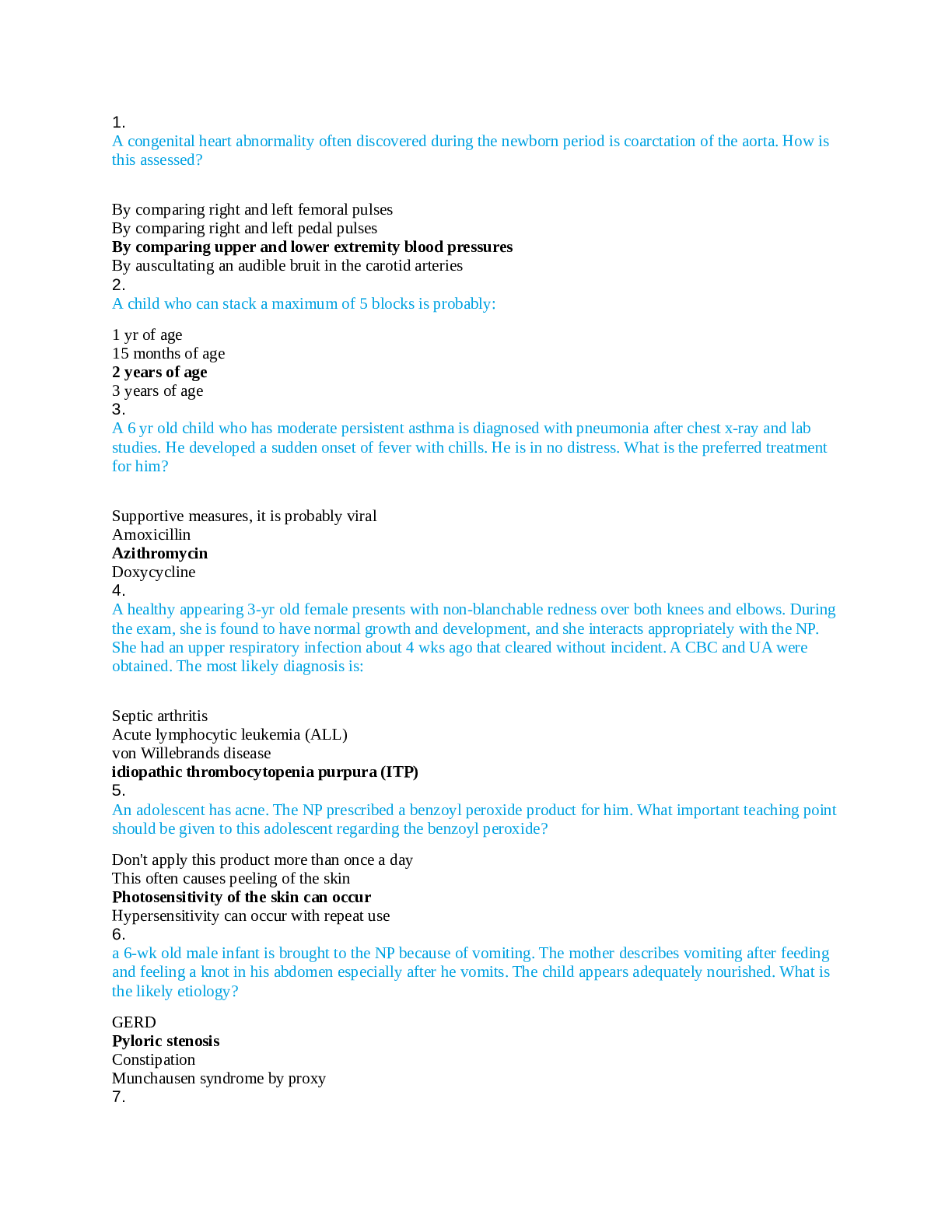
Buy this document to get the full access instantly
Instant Download Access after purchase
Buy NowInstant download
We Accept:

Reviews( 0 )
$13.00
Can't find what you want? Try our AI powered Search
Document information
Connected school, study & course
About the document
Uploaded On
Apr 28, 2022
Number of pages
28
Written in
Additional information
This document has been written for:
Uploaded
Apr 28, 2022
Downloads
1
Views
206




